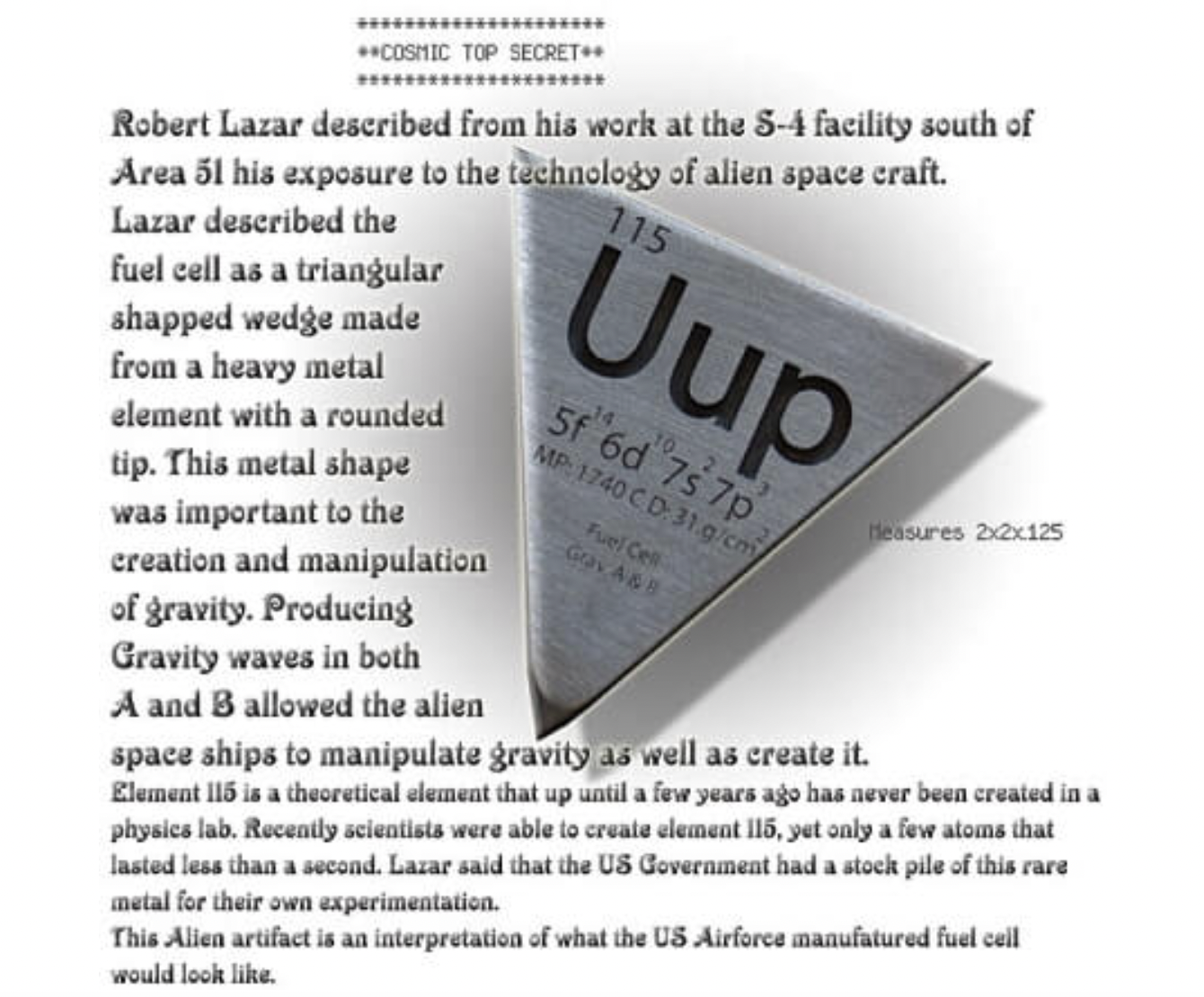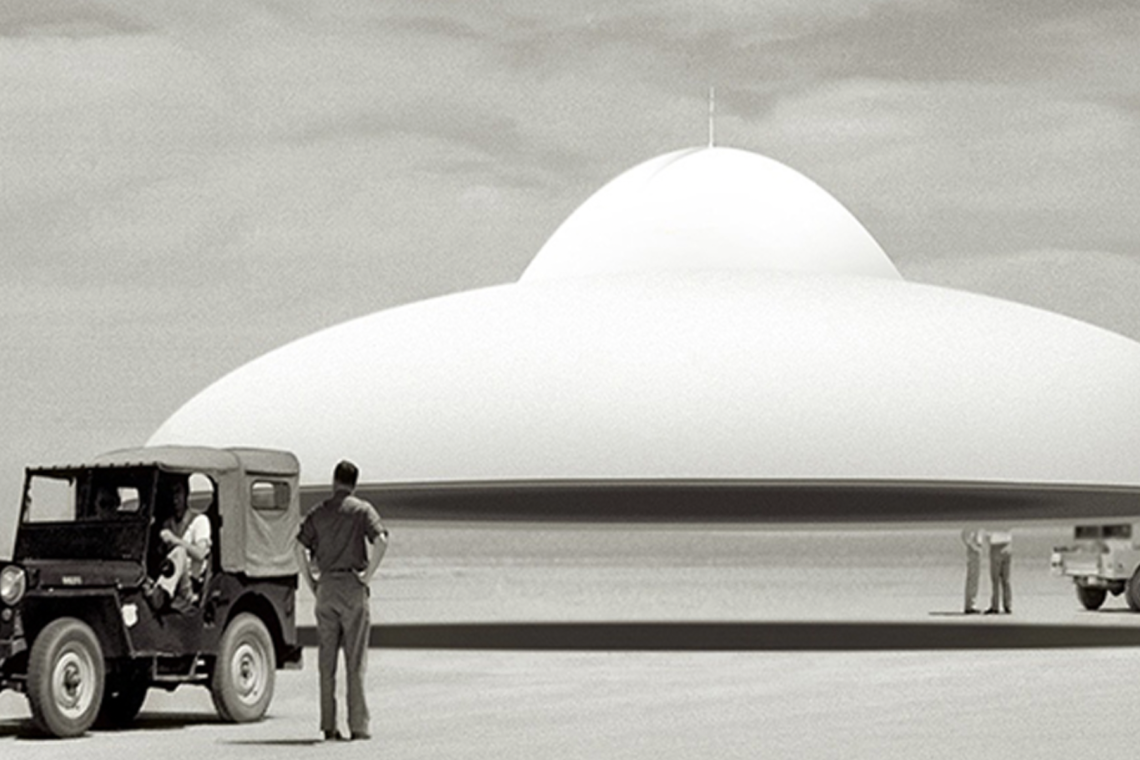Lazar claims to have seen nine distinct alien vehicles there and has extensive information on the mechanism of propulsion and other technical specifications of a disc-shaped spacecraft he refers to as the sport model. After it was determined that “schools he was alleged to have attended had no record of him, while others in the scientific world had no recall of ever seeing him,” Lazar’s veracity was questioned. Lazar’s defenders argue that his qualifications and past were damaged in order to raise the precise credibility issues that his adversaries have raised. So, what about Ununpentium, commonly known as Element 15?
Bob Lazar alleges that atomic Element 115 was used as a nuclear fuel for the cars under investigation. Element 115 (temporary dubbed “ununpentium” (symbol Uup)) was said to have given an anti-gravity energy source as well as antimatter for energy generation under proton bombardment. Because the nucleus of Element 115 has a very powerful nuclear force field, the consequent large-scale gravitational impact would be a distortion or warp of space-time, thus shortening the distance and travel time to a destination

In a recent accelerator investigation, researchers verified the presence of this synthetic element. Will it be enough to grant ununpentium a new name and formal recognition? A new series of experiments now backs up one of those elements’ finding. In Germany’s GSI accelerator, an international team of researchers created an element with 115 protons. This isn’t the first time a research team has created the element, which is known as ununpentium (Latin for one-one-five plus “-ium”).
Ununpentium was initially created in the early 2000s by a team of Russian and American scientists, who published a study on it in 2006. However, the International Union of Pure and Applied Chemistry (IUPAC) did not deem that data sufficient to formally recognize—or name—ununpentium at the time. The latest GSI studies are another another step in the right direction. Why do we say individuals “synthesized” or “created” ununpentium rather than “discovered” it? Ununpentium, like other super-heavy elements, can only exist as a result of human experimentation. It’s a completely artificial element (ununpentium: elements: polyester: fabrics?). You can’t make it in any laboratory, either. Fusion processes, nuclear reactions, or other highly specialized chemistry are required to create atoms heavier than uranium, which is the heaviest element to exist naturally on Earth and has 92 protons. The GSI accelerator has previously produced six synthetic elements with more protons than uranium.
To create ununpentium, a group of scientists at GSI attacked a thin film of americium, a synthetic element with 95 protons, with calcium ions, each of which has 20 protons. The bombardment joins the nuclei of the americium and calcium atoms to form a new 115-proton nucleus. (See GSI’s “new elements” webpage for an instructional GIF.) Ununpentium, like all super-heavy, manufactured elements, decays rapidly. Researchers produced ununpentium atoms that lasted only 30 to 80 milliseconds for the 2006 announcement. IUPAC members will now study the fresh confirmation of the 2006 work and decide if it is sufficient to warrant formal recognition for ununpentium, according to Lund University in Sweden. The latest ununpentium tests at GSI were led by Lund researchers. Meanwhile, the findings of the Lund team have been published in the journal Physical Review Letters.
According to the Lawrence Livermore National Laboratory in the United States, work on synthetic elements not only confirms cool chemistry hypotheses, but also helps researchers understand more about the fission process in general. Ununpentium, on the other hand, is unlikely to appear in even the most advanced future gadgets. Scientists have only discovered useful applications for synthetic atoms with 100 or fewer protons so far. Of course, nothing about this finding supports Bob Lazar’s fantastical fantasies, and while it has always been theoretically feasible to generate many of these elements that do not occur in nature, doing so in the lab only teaches us anything about fusion at this time. There’s no mention of UFOs.



